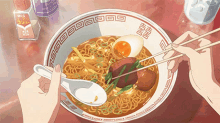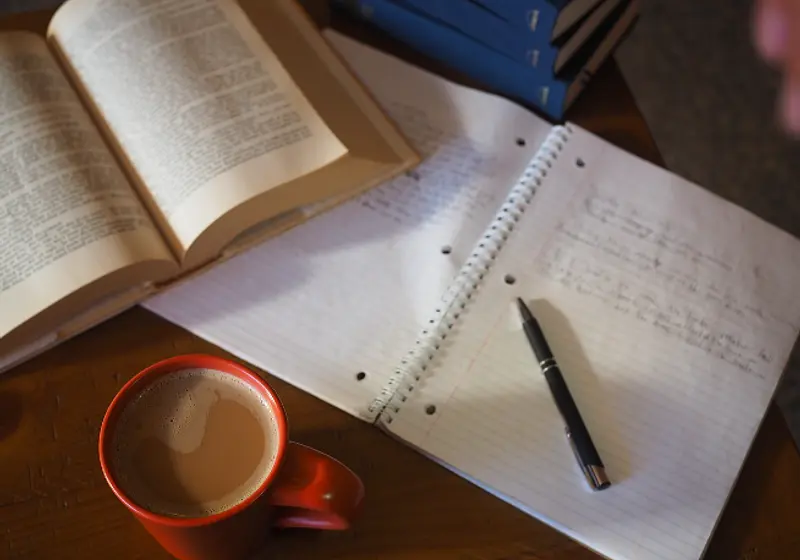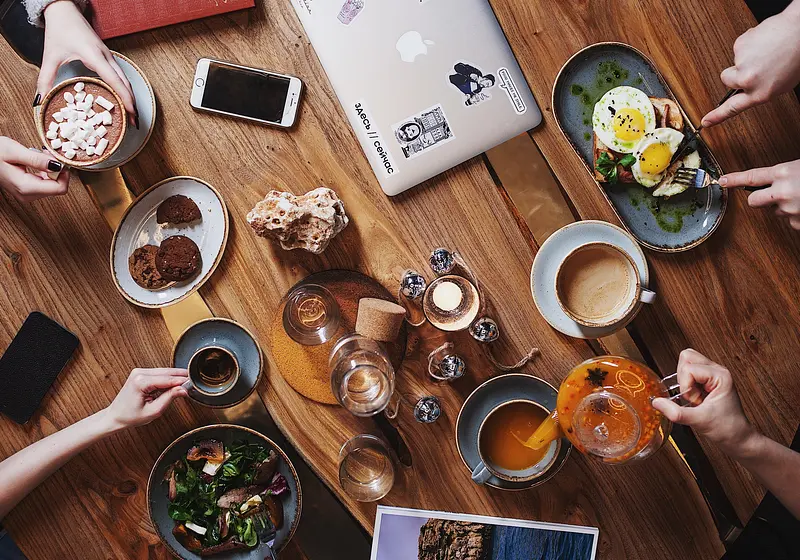It’s about that time of year again! Don’t we all just love those emails from our favorite teachers announcing an upcoming 60-question midterm (which is 35 percent of your grade by the way)? I personally look forward to waking up at 7 in the morning after the annual midnight cram session.
In all seriousness, as the leaves turn their ‘last triumph’ colors or red and orange, we must admit that the fall season is back. For a lot of us, that also means preparing for the major exam weeks; you know, the week where teachers randomly decide to bombard students with 3 or so exams back to back.
Oftentimes, the stress students experience during major academic periods like exam week can induce a sense of fatigue throughout the day. The National Institute of Health estimates that fatigue within students “significantly elevates during the exam period, from 39% to 50%”.
For a while, I’ve also had issues with increasing feelings of sleep fatigue during exam weeks, and would constantly hope for a little extra push of energy to get me through the day. Therefore I decided to experiment with energy drinks that I could use before, after, and sometimes during tests. I learned from multiple verifiable sources that energy drinks are actually a pretty commonly used technique students use for a temporary boost of alertness and attention.
In some ways, I’m a bit apprehensive admitting that I’ve picked up the habit of relying on energizing drinks to get me through them. The CDC released a report explaining that caffeine, the stimulant included in almost all energizing drinks, “can have a harmful effect on the central nervous system” and can cause symptoms of “Dehydration, Heart complications, Anxiety [and] Insomnia.”
It’s important to understand both the benefits and drawbacks of the items you choose to consume. Caffeinated beverages are by no means immune to said criticisms, as the risks of consuming them may outweigh the positives for some people. With that being said, Energy drinks are a reliable fix for those who might need it.
Without further ado, here are my top five energizing caffeinated beverages to stay motivated during exam weeks.
Tea (All Kinds!)

Image Credit: Jill Wellington from Pixabay
I know, tea is probably not the first thing that comes to your mind when thinking about caffeinated beverages. Many people don’t know this, but Tea is actually considered an energy drink, containing moderate amounts of caffeine inside each bag.
This classic aromatic beverage is said to have originated in Ancient China thousands of years ago. As the story goes, “the Chinese emperor Shen Nung was sitting beneath a tree while his servant boiled drinking water, when some leaves from the tree blew into the water”. Noticing this, Nung, who was also a very accomplished herbalist of his time, “decided to try the infusion that his servant accidentally created”. Since then, tea has been the number one consumed beverage around the world besides water.
Due to its rich history, Tea has been more commonly associated with its cultural significance and health benefits. Older adults who’ve grown into a mature appreciation of the drink are the most likely to consume a cup of tea. In fact, TeaUSA would argue that “Historically, the average purchaser of tea bags in the United States was female, 35-55 years of age”.
However, with the rise of Gen-Z and Millennial consumers, the market for Tea has skyrocketed. The Tea Association of the USA reported that “87% of millennials drink tea”. Its softer dosage of caffeine serves as an ideal beverage for those who just need a bit more energy throughout our increasingly long days.
I personally prefer a small black tea in the morning to warm my body and brain up for the day. Other popular flavors include green, Chamomile, and peppermint tea. So, if you’re looking for a subtle, healthier-tasting caffeinated beverage, Tea just might be the go-to.
Celsius

Image Credit: Skitterphoto from Pixabay
Celsius, developed by Steve Harley in 2004, is relatively new to the caffeinated beverage scene. The drink was initially advertised as a pre-workout energy drink, similar to most popular brands such as Red Bull and Monster. However, the real allure of Celsius lies in its ingredients– or lack thereof. Unlike most of its competitors, Celsius has mounted itself as the best healthy energy drink, containing “low sodium and zero sugar, no aspartame, and no artificial flavors, colors, or preservatives.”
Another thing I find convenient about Celsius is its uncarbonated option. I find that most energy drinks have a carbonated texture to them, which I think makes the taste too overwhelming. Many times, the sparkly, almost spicy aftertaste it leaves behind makes it undesirable to drink altogether.
The dosage of caffeine in Celsius is a lot higher than that of Tea, averaging about 200 milligrams per can. I usually grab a Celsius if I have an hour or so to spare before committing to virtual FaceTime chats with friends for a grueling study session. With over 15 different flavors, Celsius is a reliable, yet enjoyable caffeinated drink. Celsius cans can be found in stores like Walmart, CVS, and Amazon, but are becoming more accessible in corner stores and gas stations.
Pumpkin Spice Latte

Image Credit: Jill Wellington from Pixabay
In my opinion, the Pumpkin Spice Latte is the most ideal counterpart to the autumn season. The light tangerine tint of the drink compliments red, orange, and yellow leaves as they fall off their branches. I find the visual aesthetic produces a sense of comfort that eases the soul on a crisp fall day.
I also love how comforting the slight spice combines with hot espresso to warm my body on the way to school. That feeling is most appreciated on first-semester test days, where just the thought of taking an exam adds to the 40-degree weather to provoke shivers down my spine.
The Pumpkin Spice Latte for millennials is considered a long-standing favorite during this time of year. However, “The Pumpkin Spice Latte was launched in the fall of 2003”, which was only 20 years ago. Almost immediately after its introduction by Starbucks, consumers flocked to the aesthetically pleasing drink.
The popularity hasn’t dropped since and has routinely contributed to the sales spikes in the fall season. The founding company, “Starbucks alone reportedly sells 20 million pumpkin spice lattes annually”. Many sources have reported that hundreds of millions of pumpkin spice lattes have been sold since its introduction in 2003.
For some, Latte’s aren’t the best version of the pumpkin spice flavor. As an alternative, I personally prefer hot chocolate with pumpkin spice pumps added to the drink. If iced coffee is more your forte, I would suggest grabbing a (caramel) pumpkin spice frappuccino or macchiato.
Mochas

Image Credit: Daria-Yakovleva from Pixabay
The blend of water and caffeine is really hard to get right in a coffee beverage. Using too much or too little water in any coffee could result in a really bitter aftertaste; no one likes that. Unfortunately, the secret to finding the perfect ratio is often kept elusive in coffee shops. Many beverages that rely on said ratios such as traditional brewed coffee, Cappuccinos, and at times even Lattes fall victim to bitter aftertastes.
For that reason, I love Mocaccinos or Mochas. This variation of caffeinated beverage has an inherent protection against bitterness: Chocolate. Unlike the traditional hot or cold brew, Mochas have an additional, equally powerful flavor in their chocolate flavoring.
I find the melty, sweet counterpart makes Mochas so much more consistent than a lot of other caffeinated beverages. Speaking of consistency, Mochas have been for a really long time, “originat[ing] in Yemen during the 15th century.” Since its creation, Mochas have spread as a staple in coffee shops all around the world.
I found out about Mochas by accident. As a mediocre fan of sneakers, I first heard of “Mocha” while browsing sales for the Mocha Jordan 1. Curious to see what Mocha meant, I looked up the name and found overwhelming photos of the sweet drink.
Admittedly out of boredom, I went out of my way to try one and was pleasantly surprised. Since then, I’ve considered Mochas a dependable caffeinated drink that I could always look forward to when desired (like exam weeks).
Perrier

Image Credit: Msobaidi from Pixabay
The assumption behind Perrier’s brand is that they’re an exclusive sparkling water brand. Every Google search suggests that Perrier is closer to a Poland Spring alternative than a caffeinated beverage brand. I personally love the exclusive-style branding and contemporary taste of Perrier’s sparkling water.
It has a really smooth carbonation ratio, allowing the natural water flavor to reign supreme. Before leaning into caffeinated beverages, Perrier was my personal go-to for a healthy drink that has some type of flavor.
Almost as if Perrier heard my prayers, the brand recently came out with “Perrier Energize”. This version of the sparkling water would actually incorporate “about as much caffeine as an 8 oz cup of coffee (120 mg)”.
For reference, that amount of coffee is the average consumer amount of caffeine intake. Any higher dosage would be overkill, so Perrier did a good job at the ratio there.
I love the different flavors Perrier Energize brings forth. My personal favorite happens to be Grapefruit, which ironically has an alluring bitter aftertaste I’m fond of. Most of the flavors have their own unique aftertaste though, and are all pretty good for sparkling water.
Of course, there are better tasting alternatives as discussed above, but Perrier Energize is by far the healthiest caffeinated beverage. After all, it is just water with a couple of extra ingredients. If coffee drinks or strong energy drinks are too strong or overbearing, especially on test days, I would suggest grabbing a Perrier Energize can.
For most students, November and December are very busy months due to college applications, big projects, and finals. As a result, it can be hard to stay energized for all the hard work you need to do. Caffeine can definitely help with this dilemma, and I’ve found it to be an extremely useful tool.
However, don’t rely on caffeine as your source of energy. Planning sleep the night before test days, and creating study schedules also help conserve energy for those big, stressful days. Caffeinated drinks are best used as an extra little push, especially those 5 caffeinated beverages I’ve mentioned that helped me through recent exam weeks.












